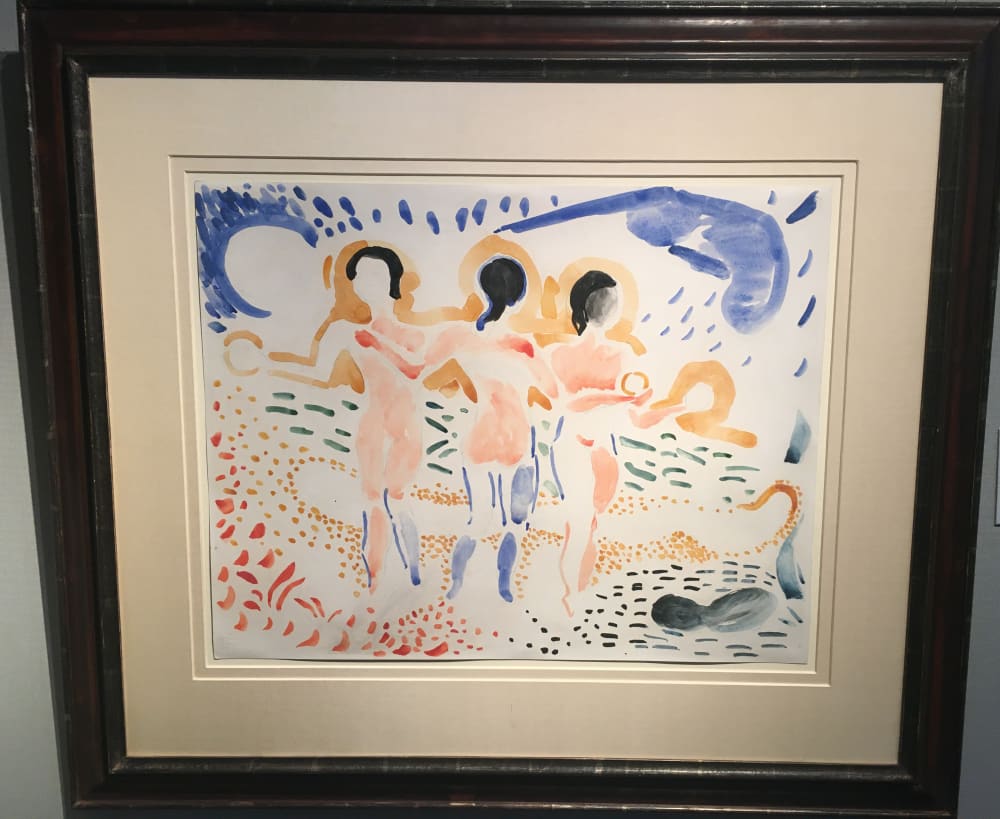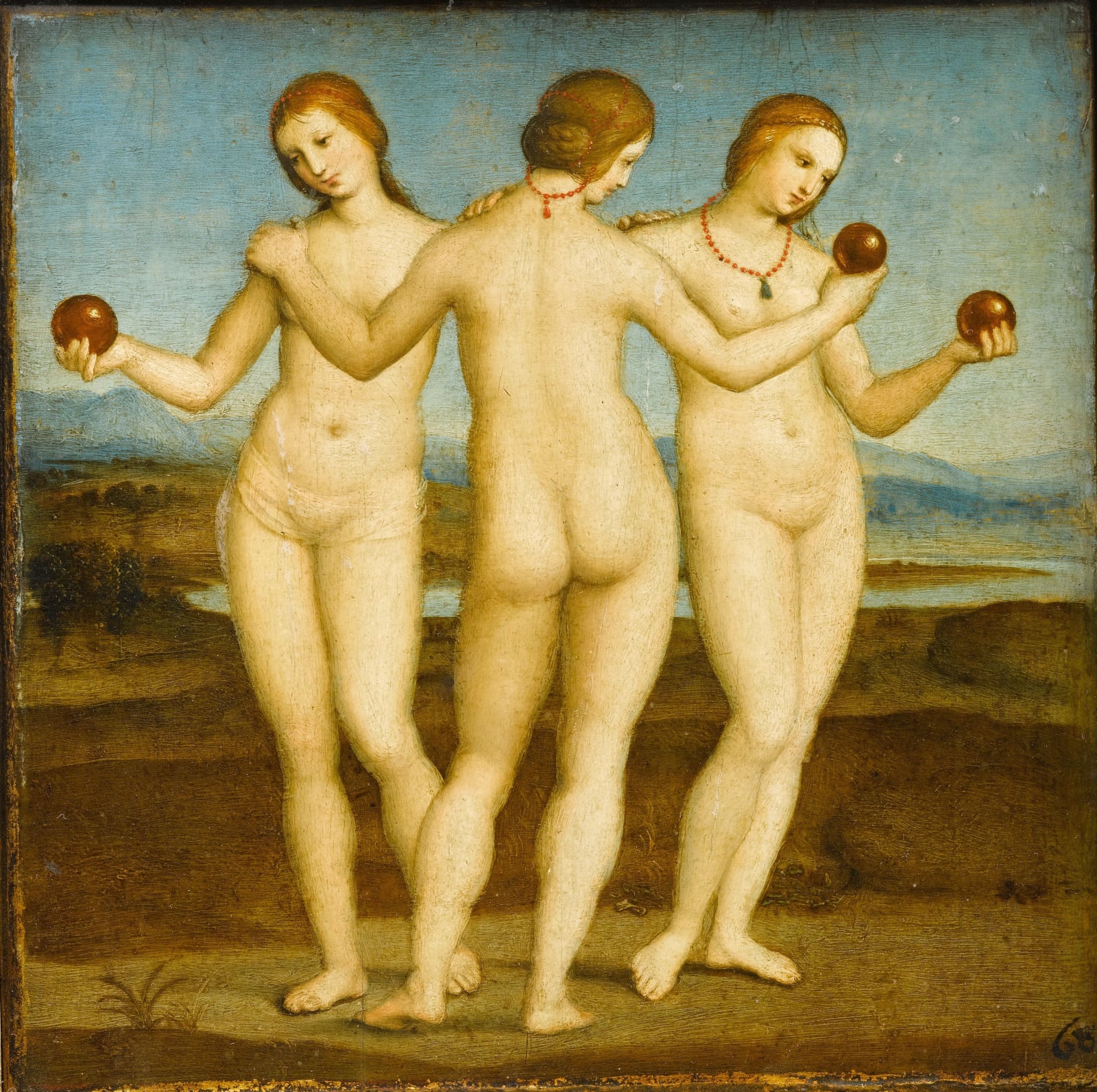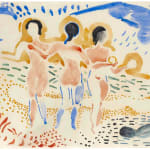-
Artworks
Open a larger version of the following image in a popup:
Raphael, Les Trois Graces, Oil on panel, Courtesy Musée De Chantilly
André Derain French, 1880-1954
Les trois Grâces, c. 1906Watercolour on paper47.7 x 60.5 cm
18 13/16 x 23 13/16 inchesSigned lower right a.derain Watermark Bristol lower leftSoldIn 1906, the avant-garde was at a crossroads; the Fauve’s concerns shifted from colour to form and from painting to drawing – instigating a period of thorough and profound questioning...In 1906, the avant-garde was at a crossroads; the Fauve’s concerns shifted from colour to form and from painting to drawing – instigating a period of thorough and profound questioning of aesthetics. Through his exploration of both “primitive” art, and the work of Old Masters such as El Greco and Diego Velasquez; Derain began to intensively question the role of colour in painting and it’s relationship to subject matter.
In April 1906, in a correspondence with Henri Matisse, Derain wrote “Nous sommes peut- être une génération heureuse en ce sens qu’elle est peut-être la seule qui soit aperçue que la pierre, la couleur… n’importe quelle matière en laquelle se complait l’esprit humain avait une vie propre, indépendante de ce qu’on la faisait représenter » ( We might be a happy generation, in the sense, that this generation might be the only one that realized that stone, colour, etc… any substance in which the human mind revels in, might have another purpose independent from the one we want to assign them) That same year, Derain worked on a series of paintings and watercolours on the motif of the bather. Two of the most famous paintings are L’Age d’Or (1903-1905) held in the Modern Art Museum in Teheran and La Danse (1906), in private collection. He also completed the painting Trois nu dans un paysage circa 1904 that was more directly associated with the theme of the Three Graces. These particular works demonstrate the difference of expression in Fauvist drawings when compared with painting of the same period highlighting the importance of form and outline alongside the Fauve’s predominant interest in colour.
Here, Derain expresses then the necessity of a divorce between line and colour. His works from this period explore a many forms of disparate mark making, such as a continuous and multiplied line, dashes, point, arabesques, stains and rubbings. These varied and extensive experiments eventually led to larger scale watercolours, demonstrating a perfect synthesis of drawing and colour. In ‘Les trois Grâces’ the central position of the titular three women alludes to Raphael’s The Three Graces (1505), a popular mythological reference during the Renaissance. The Three Graces in mythology are an allegory for Beauty, Youth and Elegance, demonstrating Derain’s preoccupation with classical themes. Derain’s masterful use of watercolour conveys the emotive power of the landscape through simple touch - both delicate and intimate - the innovative use of the dashed line perfectly relaying a sense of movement in the surrounding vista.
Provenance
Collection André Fize, Paris
Private collection, France
This work has been authenticated by the Comité Derain.
3of 3
Join our mailing list
* denotes required fields
We will process the personal data you have supplied to communicate with you in accordance with our Privacy Policy. You can unsubscribe or change your preferences at any time by clicking the link in our emails.




